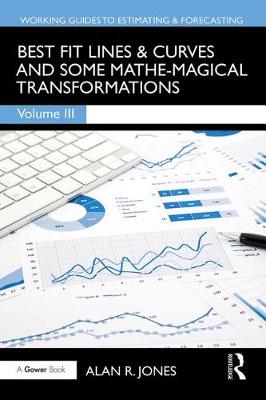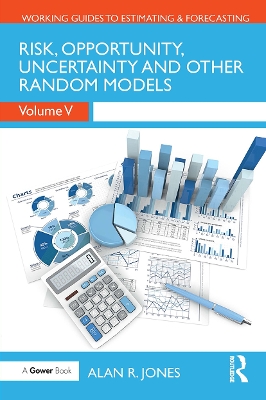Working Guides to Estimating & Forecasting
2 primary works
Book 3
Best Fit Lines and Curves, and Some Mathe-Magical Transformations (Volume III of the Working Guides to Estimating & Forecasting series) concentrates on techniques for finding the Best Fit Line or Curve to some historical data allowing us to interpolate or extrapolate the implied relationship that will underpin our prediction. A range of simple 'Moving Measures' are suggested to smooth the underlying trend and quantify the degree of noise or scatter around that trend. The advantages and disadvantages are discussed and a simple way to offset the latent disadvantage of most Moving Measure Techniques is provided.
Simple Linear Regression Analysis, a more formal numerical technique that calculates the line of best fit subject to defined 'goodness of fit' criteria. Microsoft Excel is used to demonstrate how to decide whether the line of best fit is a good fit, or just a solution in search of some data. These principles are then extended to cover multiple cost drivers, and how we can use them to quantify 3-Point Estimates.
With a deft sleight of hand, certain commonly occurring families of non-linear relationships can be transformed mathe-magically into linear formats, allowing us to exploit the powers of Regression Analysis to find the Best Fit Curves. The concludes with an exploration of the ups and downs of seasonal data (Time Series Analysis). Supported by a wealth of figures and tables, this is a valuable resource for estimators, engineers, accountants, project risk specialists as well as students of cost engineering.
Book 5
Risk, Opportunity, Uncertainty and Other Random Models (Volume V in the Working Guides to Estimating and Forecasting series) goes part way to debunking the myth that research and development cost are somewhat random, as under certain conditions they can be observed to follow a pattern of behaviour referred to as a Norden-Rayleigh Curve, which unfortunately has to be truncated to stop the myth from becoming a reality! However, there is a practical alternative in relation to a particular form of PERT-Beta Curve.
However, the major emphasis of this volume is the use of Monte Carlo Simulation as a general technique for narrowing down potential outcomes of multiple interacting variables or cost drivers. Perhaps the most common of these in the evaluation of Risk, Opportunity and Uncertainty. The trouble is that many Monte Carlo Simulation tools are 'black boxes' and too few estimators and forecasters really appreciate what is happening inside the 'black box'. This volume aims to resolve that and offers tips into things that might need to be considered to remove some of the uninformed random input that often creates a misinformed misconception of 'it must be right!'
Monte Carlo Simulation can be used to model variable determine Critical Paths in a schedule, and is key to modelling Waiting Times and cues with random arisings. Supported by a wealth of figures and tables, this is a valuable resource for estimators, engineers, accountants, project risk specialists as well as students of cost engineering.

